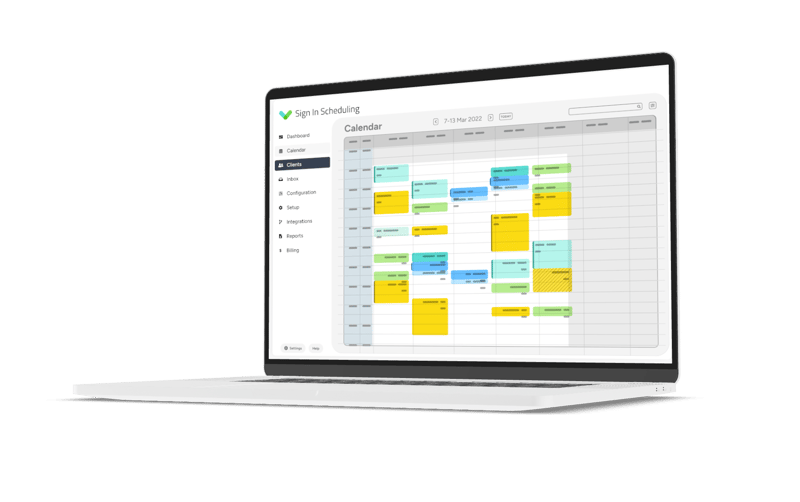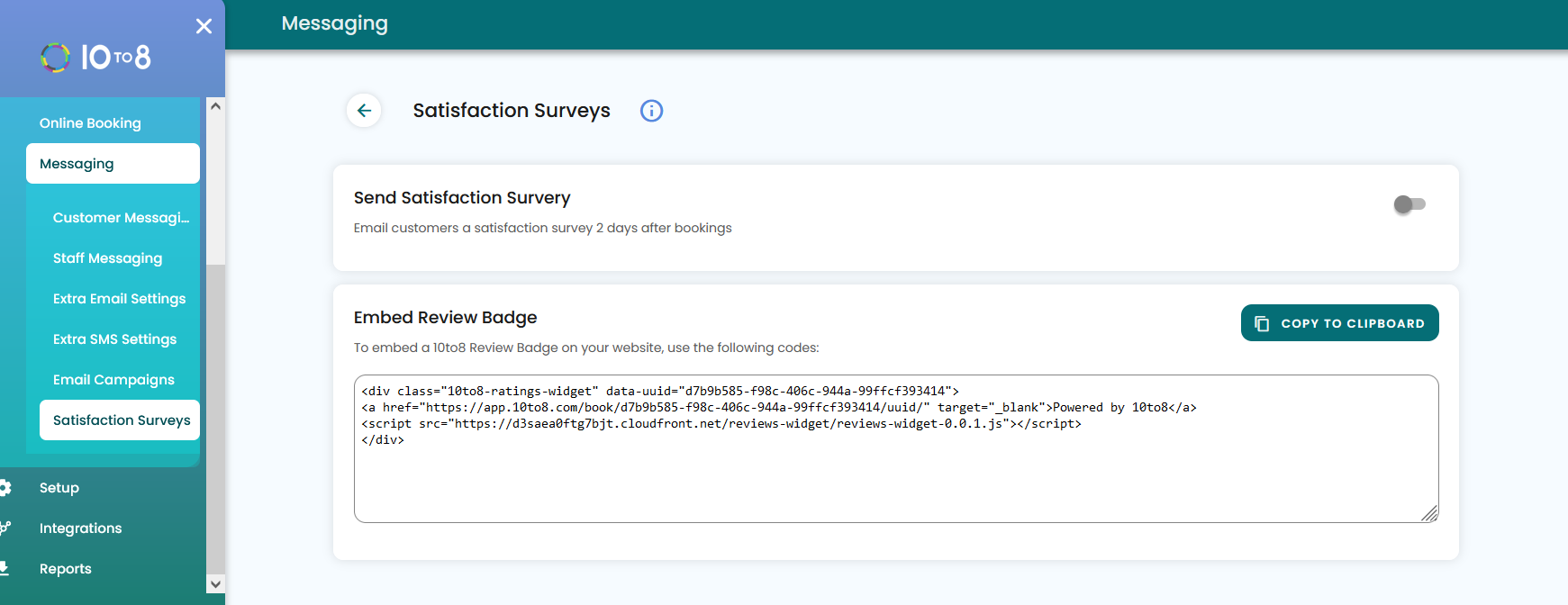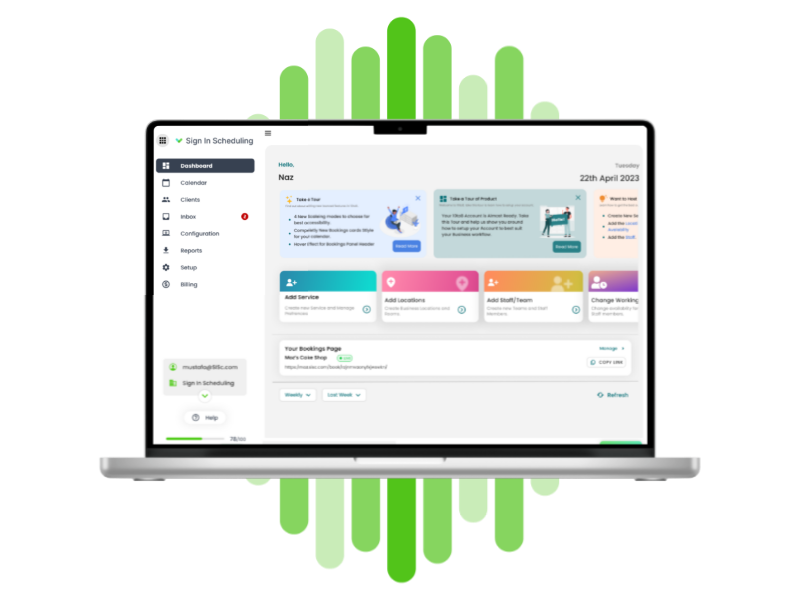Here at 10to8 we love data — but are statistics the final piece in the puzzle of patient...
What Makes a Positive Patient Experience?
A lot of people dread going to the doctor. Some people have had such a negative patient experience in the past that they avoid doctors altogether. And who can blame them when the average ER wait time in the US is around 103 minutes.
However, it can only take a few small changes to dramatically improve your practice. This can have a corresponding effect on your patient satisfaction.
These days, it’s not just efficiency and quality of care that attracts patients. It’s also good customer service, ease of booking and, of course, reduced wait times. Prioritizing these things can lead to greater patient experience, happiness, and retention.
So, have you’ve been meaning to spruce up your surgery and achieve better patient care? Here are some top tips to get you started.
Why is it important to connect with patients?
Like with any business, people are never happy to be treated as numbers in a system.
This is even more important if your customers are patients who need to reveal personal information and perhaps even subjecting themselves to an invasive examination.
As humans, we crave emotional connections. We want to be heard, valued, cared for, and understood. This is ultimately what keeps us coming back.
Think about this for a moment.
Have you ever been to a restaurant and had to send some food back but ended up with something for free or money off the bill? Even though you had a complaint, if the restaurant respected your dissatisfaction and fixed the problem, then you’re much more likely to return.
This is the same with your patients. A grumpy receptionist, a long wait, and a doctor who acts as though they want you out of their office as soon as possible are surefire ways to ensure that people never come back.
Does an emotional connection improve the patient experience?
Numerous studies reflect just how strongly patients and physicians are affected by emotional connection. For example, this study in Academic Magazine shows that physicians with higher empathy had a better success rate when treating diabetes patients.
Here are a few simple ways to achieve a positive emotional experience:
- Apologize for long wait times – this shows you care and value their time.
- Use an ice-breaker to relax tension.
- Do your best to pronounce names correctly – ask if you don’t know.
- Listen properly – and not just from a medical point of view.
- Provide personal warmth, friendliness and treat them as you would want to be treated.
As well as patient experience benefits, this approach can also have positive effects on doctors too. Creating human connections (with appropriate limitations) with your patients can build a sense of fulfillment. This can be incredibly rewarding.
It also causes a release of endorphins which can promote an overall sense of well-being. It can also go a long way in preventing workplace burnout.
Do patients prefer online booking?
Well, ask yourself this: would you rather call your doctor during your busy workday (as that’s the only time they’re open), and be put on hold for 20 minutes? Or, would you prefer to log into a secure patient portal in your spare time and book an appointment with a few clicks?
According to GetApp, a staggering 70% of patients would rather book their doctor’s appointments online. They also found that 56.4% are frustrated with waiting on hold and the inconvenient office hours related to booking appointments by phone.
Online scheduling is one of the simplest ways to improve patient satisfaction in healthcare. And it is something that you could implement today.
How do you make a patient’s experience better?
If you are keen to better your patients’ experience, then you’re in the right place. Here are the top 13 ways to revamp satisfaction at your practice.
Create a helpful and informative online presence
In today’s modern world, web presence is very important. When people first start searching for your practice, they’re most likely going to look you up on a search engine like Google or Bing. This is why you’re going to want your website to be as easy to find and navigate as possible.
Nobody has time for slow sites that are tricky to understand. This is especially true for the older generation, people with disabilities, or those who aren’t comfortable with modern technology. So, if your site is slow and confusing, potential patients will probably just give up and leave.
It may be worth implementing WCAG compliance on your website to help with this. Alternatively, you could turn to suppliers that have already achieved compliance with the web accessibility standards (like 10to8).
As well as user experience, it also helps to display useful content on your site. Interesting articles and videos go a long way to keeping people engaged.
Even something as simple as a well-designed ‘About Us’ page will give patients a clearer indication of what to expect from your practice. Similarly, a clear ‘Contact Page’, will allow people to easily get in touch with you.
According to INC, 63% of patients would choose one practice over another if they offered a compelling, easy to navigate online presence. Furthermore, 9 out of 10 patients reported that they’d change providers if they found negative online reviews.
More often than not, your website is your first impression, so make it a first impression that counts.
Offer online appointment scheduling
One of the most important aspects of modern medical technology is how patients book their appointments. Giving patients the freedom to schedule appointments when they want (as opposed to during the surgery’s limited opening hours), can make a world of difference to how they perceive your practice.

A study by Accenture concluded that almost 70% of patients are more likely to choose a doctor who offers online appointment scheduling. Another study found that 47% would switch from a doctor who didn’t offer online scheduling, in favor of one who did.
So, if you don’t currently offer patients the ability to book their appointments online, then it’s a great place to start improving your patient experience.
Simplify communications with confirmations
People like being able to organize their days. Routine is key and, if things are organized, then activities that aren’t part of the everyday week don’t fall off the radar. This includes doctor’s appointments.
Even regular check-ups are not what you would consider a ‘normal’ day-to-day appointment. However, if patients can add their bookings to their calendar, they’re much less likely to forget.
The bottom line is, one of the simplest ways to improve patient satisfaction in healthcare is to send appointment confirmations shortly after a booking is made.
Use appointment reminders to wave goodbye to NDAs
Even the most organized of us get rushed with last-minute meetings and even our health gets pushed to the back of our minds.
Appointment reminders can help solve this issue.
You can send a simple SMS or email message anything from a week to a day to an hour (or all 3) before a patient’s appointment to help them stay on track. You can also ask the patient to respond to the reminder, confirming that they will be attending.
Not only does this let patients know that you understand they are busy, but it also helps reduce costly no-shows for your practice.
On average, clinics are experiencing an 18% no-show rate. This is costing the medical industry a whopping $150 billion each year in the US alone. That’s far too much time, resources, and money lost to missed medical appointments.
So, a key way to ensure patient experience is to send timely appointment reminders.
Enable patients to request repeat prescriptions online
People who suffer from asthma may need regular inhalers. People with diabetes may need regular metformin tablets. And people with severe allergies may need regular EpiPens. Even something as simple as the contraceptive pill is often ordered on a repeat prescription.
On average, almost half of the British population (43%) use repeat prescriptions. Enabling people to order these themselves can save countless admin hours and resources.
Managing repeat prescriptions virtually could save GPs six hours and 40 minutes a week on paperwork. Over 3 years, this could save the NHS £137 million, general practices £328 million, and pharmacies £59 million.
The impact on patients is great too. The study revealed that patients managing their prescriptions online would likely save an average of 3 hours and 39 minutes per month. This factors in time spent arranging appointments, traveling to GPs and pharmacies, sitting in waiting rooms, and standing in queues. It’ll also save them £147 in associated costs.
Additionally, 22% of patients reported having missed repeat prescription appointments. This is commonly due to difficulty getting to the GP, surgery opening hours clashing with their workday, or trouble getting time off work.
This number will once again be contributing to those costly no-shows. Offering repeats online is another quick win to skyrocket your positive patient experience.
Enable patients to fill out virtual paperwork
Patients will often arrive at the GP only to be handed a clipboard and a pen, be told to fill in a form, and (once again) get to the back of the queue.
Offering patients the ability to fill in their paperwork online gives them the flexibility to fill them out from home, at a time that suits them. This once again shows you value their time. It will also help reduce long waits and crowding around surgery reception desks.
If you can offer a virtual option for those who prefer filling in forms online and arriving at the practice prepared, you will also save your admin staff time trying to figure out hard-to-read handwriting. Plus, virtual paperwork is more environment-friendly. Paper forms waste resources when forms can be completed virtually.
Ensure the staff members are friendly and the waiting room is comfortable
There’s absolutely nothing worse than sitting on a hard, plastic waiting room chair, surrounded by people coughing and sneezing and staring at posters depicting gruesome diseases.
The waiting room, and the reception staff, are usually the first things people see when they arrive at your surgery. Try to make them as inviting as possible. Especially since the average waiting time at the GP’s is over 30 minutes.
Ask the reception staff to be polite and welcoming. Of course, you will need to make staff happy and satisfied with their jobs first. So, make sure to show appreciation towards their work. It’s not only their salary, professional recognition, career development programs, and ‘Employee of the month’ type of competitions can go a long way too.
Offer comfortable chairs, use warm lighting, and place seating areas a reasonable distance from one another so people don’t feel crowded. Providing patients with a relaxing experience when they arrive at the GP will make them feel at ease before their appointment.
You could also consider playing soothing music or the radio as uncomfortable silence is notably awkward. Giving patients something pleasant to do whilst they wait – like a selection of magazines, WiFi access (even limited), or some games for younger children – can also help boost the patient experience.
Reduce wait times as much as possible
People expect to wait when they arrive at the doctor’s. And a small wait is almost inevitable.
However, 84% of patients think that the overall time they’re kept waiting is a huge contributing factor to patient satisfaction in healthcare. Furthermore, 1 in 5 have switched doctors due to excessively long wait times. Another 30% said they abandoned their appointments if they were kept waiting for too long.
If your practice’s wait times are significantly above average, then you may want to look into this as soon as possible. This will ultimately ensure your patients are happy and continue to stick around.
Consider offering virtual appointments
Telehealth is on the rise and 77% of patients would consider seeing a practitioner virtually. This has been sped up by COVID-19, of course.
Nonetheless, many reported that the ease of virtual appointments – not having to commute to surgery, wait in a doctor’s waiting room and the reassurance that they won’t be surrounded by other sick people – were the main reasons for this preference.
Telehealth has the power to lower wait times, increase patient volumes, and dramatically enhance patient satisfaction. It will also reduce patient travel costs and paperwork, thus decreasing the overall impact on the environment due to medical care.
All you need is a strong internet connection, a computer, and the ability to hold good virtual meetings. As such, it may be worth considering telehealth for your practice.
Send surveys after patient appointments
Sending out a thoughtful survey after a patient’s appointments is a great opportunity for gathering customer feedback, It’s also a way to discover customer complaints and what people like and dislike about their patient experience.
The best time to send a survey is immediately after the appointments. This way the patient’s experience is still fresh in their mind and they’ll be able to provide a more accurate response.

Plus, if you’re using review platforms to gather customer feedback, then the more positive feedback you get, the more likely you are to attract new customers in the future.
Make sure to quickly respond to online feedback too. This is great for your reputation and boosts how patients view you online.
Encourage and invite patients to ask questions
Healthcare is often perceived as a daunting topic. People aren’t always comfortable speaking openly about it. Many patients are curious about things that happen during their appointments but are too nervous to ask questions.
To create a positive patient experience, try to let no questions go unanswered. Encourage patients to speak their minds and ask questions if they’re curious. This both helps people feel more comfortable around you and reassures them that you’re not trying to hurry them out the door.
It’s also worth letting them know that there are ‘no bad questions’. If they still aren’t comfortable opening up, let them know that you’re happy to answer anything next time or via an indirect platform like email. This will hopefully make them feel more comfortable asking things in the future.
Treat them like a person
Nobody likes being treated like a number on a file. This is especially true with patients. Referring to someone purely from their health records can seem rather impersonal.
Remember to ask people how they are doing in general before bombarding them with medical questions and jargon. Call them by their name and, if they tell you anything personal like they have a new job or have taken up baking as a hobby, ask them about it.
Make sure to keep it professional of course. But at the end of the day, it’s just simple human interaction.
Making people feel important and letting them know that you care about them can do wonders. Not only will it dramatically improve your patient experience, but it can also improve your workday simply by building connections and having a friendly chat.





Blog comments